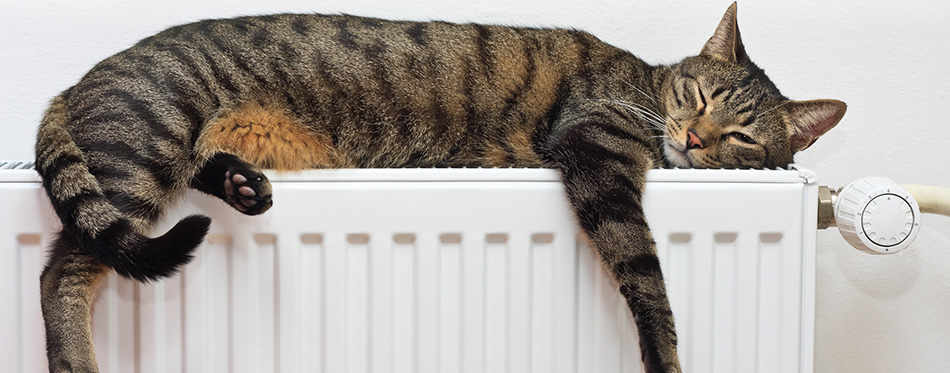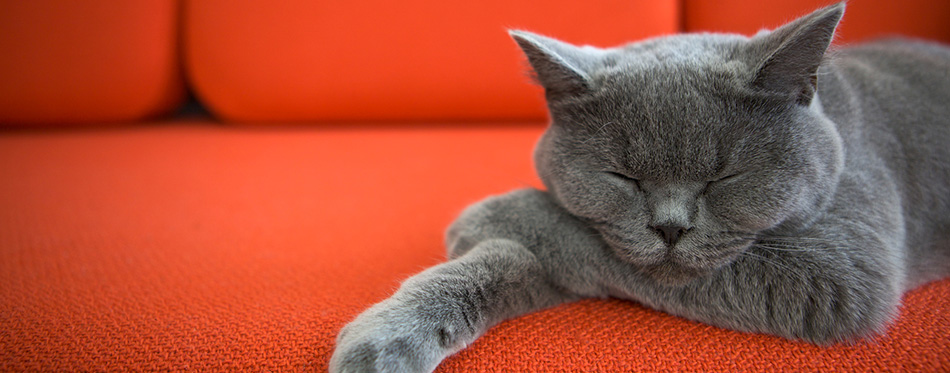You may have seen your kitty cat moving its paws, chattering, or twitching while sleeping in its cat bed. Like any other pet parent, you may think that your cat is in dreamland. And like many cat lovers, you may also want to know what is going on inside their brains when dreaming. You’re right; cats do dream. However, as far as the content of their dreams go, the best we can offer are assumptions. Let’s dig deeper.

REM Stage Sleep and the Dreaming Cat
On average, cats sleep about 16 to 18 hours every day. During sleep, the cat goes through different stages that reflect brain electrical activity. The initial stages, called non-REM sleep, prepare the cat for a deep slumber. The cat can get aroused or awakened easily during these stages. But then, the kitty goes into a deep sleep where more vigorous stimulation is required to awaken them. In these non-REM stages of sleep, the body goes into a relaxed mode.
By the time they reach the REM stage of sleep, things start to get interesting. Brain wave activity increases in dramatic fashion, and one can see rapid movements of the eyes underneath the closed eyelids. The heart rate and breathing also increase. There are muscle twitching, fine tremors, and faint vocalizations. These activities make the sleeping kit look like it’s awake, but make no mistake, they are in a dreamland.
Memories and the Feline Hippocampus
No human being can provide a very accurate description of what animals are thinking. Sure, there are so-called “animal whisperers”, but how can we know they are not making their “findings” up? But as it turns out, cats do indeed dream.
However, when it comes to the actual content of their dreams, the best that we can offer are brain wave correlations. To be more specific, the electrical activity of the brain during sleep somehow correlates with the brain wave patterns of the cat when it is awake and doing a particular activity. Hence, one can say that the cat is processing memories during the REM stage of sleep. And when it comes to memory, you’ve got to give credit to the hippocampus in the cat’s brain.
The hippocampus is important in the consolidation of memory, both short-term and long-term. To be more specific, the hippocampus processes new information and stores it for future use. These new memories often come from events that the cat recently experienced.
During sleep, every other organ in the cat’s body gets stimulated. In general, this is the time of sleep when the hippocampus is most active. It processes and consolidates various pieces of information that the cat may have experienced in the past few days.
In the consolidation of these bits of experiential information, some of the physical aspects of the experiences can manifest while the cat is dreaming. That’s why you may see the cat “walking” in its sleep or meowing with its eyes closed. Other peculiar behaviors that you may see while the feline is sleeping may be the direct result of the hippocampal processing of memory.
Head over to our review of Heated Cat Beds for more options.
Feline Dream Content
As already pointed out, it is almost impossible to decipher the actual content of feline dreams. For starters, brain wave patterns do not tell you the story behind the movements and sounds during sleep. They only show you that there are electrical activities in the brain. There are no brain waves that show the cat is jumping, running, or pouncing on prey.
The only way we can make near-accurate assumptions is by comparing brain wave patterns. First, you’ll get the brain wave pattern of a cat when it is awake and take note of the activities that it does. Second, you’ll obtain the brain wave readings of the same cat when it is asleep and in the REM stage. Now, you can compare these two patterns. There will always be brain wave segments that are present in both patterns. These similar patterns can give you an idea of what the cat could possibly be dreaming of.
Take note of the word “possibly”, as we mean it. Again, unless your cat can talk to you in a manner that is comprehensible, then all you (and all of us) can do for now is make calculated assumptions.
The question now is what our feline friends think about when they are in dreamland. Since dreams are a manifestation of the activity of the hippocampus, it’s safe to say that the cat’s dreams have something to do with its experiences. And what do cats experience every day?
First, it’s likely that your cat is dreaming about its owner, you. Most cats may not have the social intelligence of dogs, but they are more than capable of forming lasting relationships with their owners. Playtime activities are always fun times for cats as they get to live out their predatory instincts. Cuddling all day long on your lap can also be a fantastic memory that they can relive in their dreams. No wonder you may hear them purr while sleeping. Giving your cat a fabulous treat can also be a good dream. You’ll see it licking or making noises with its tongue while asleep. Take a look at our review of the best cat treats for more options.
Second, your kitty may dream about activities related to its being a hunter. They will stalk, run after, and pounce on prey. During sleep, you may see the characteristic walking or running movements of your pet’s limbs. You might even notice the arch on its back as it hunches for the kill.

Finally, any everyday activity that is memorable can be a great source of dreams for the cat. Keep in mind that this doesn’t always have to be a positive experience. It can be negative, too. In such cases, it’s possible that your kitty will be having a nightmare. If you notice your cat is having a bad dream, don’t wake it up. You may get on the receiving end of razor-sharp teeth and claws if you do!
Cats, like dogs, dream just like humans do. While it’s impossible for us to determine the content of their dreams, we can safely assume that their dreams have something to do with their everyday experiences.
Source:
- Do Felines Dream? Find Out What They Dream About – Sleep Advisor

